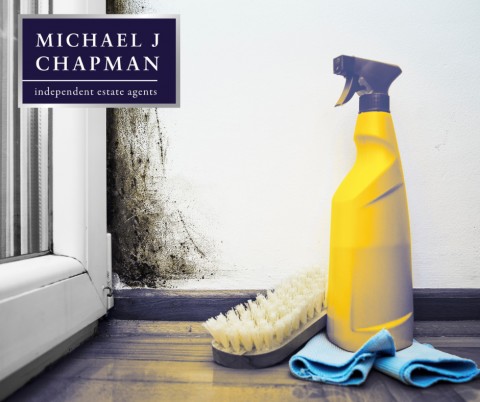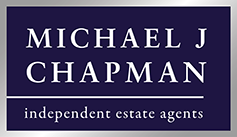
A Guide for Landlords and Tenants in Wilmslow & Alderley Edge
Over the past couple of decades, rental accommodation in Wilmslow and Alderley Edge has improved dramatically. Yet, one issue continues to cause frustration for both landlords and tenants — mould.
Mould growth isn’t just an aesthetic problem; it can affect health, property condition, and tenancy relationships. One of the main challenges is that both landlords and tenants share responsibility for preventing mould, and when disputes arise, solving the root cause can sometimes take a back seat.
So, are landlords responsible for mould in rented property? Our expert team at Michael J Chapman Estate Agents explains everything you need to know — including what’s new under Awaab’s Law.
What Causes Mould?
Mould can appear in a property for several reasons, including penetrating damp, rising damp, and condensation.
- Condensation is by far the most common cause — and thankfully, it’s also the easiest to manage.
- Rising damp tends to occur in older properties when the damp-proof course is damaged or missing. Although rare, landlords are usually responsible for resolving it unless the tenant has interfered with the damp-proof course.
- Penetrating damp often results from missing roof slates, defective guttering, or leaking pipes — typically issues that fall under the landlord’s responsibility to repair.
Tenant Responsibilities
Tenants play a key role in preventing condensation and mould. If the issue stems from poor ventilation or daily habits rather than a property defect, tenants are expected to take reasonable steps to reduce moisture build-up.
Here are a few practical measures tenants can take:
- Keep bathroom doors closed when showering and ventilate afterwards with an open window or extractor fan.
- Dry laundry outdoors where possible, or use a dehumidifier.
- Cover pans while cooking to reduce steam.
- Wipe down windows and open them for ten minutes each morning.
- Leave a small gap (10–15 cm) between furniture and external walls to promote airflow.
If the condensation is being caused by faulty heating or poor insulation, the landlord is responsible for addressing it.
Landlord Responsibilities
Under the Homes (Fitness for Human Habitation) Act 2018, landlords must ensure their properties are safe, healthy, and suitable for tenants to live in. If mould develops as a result of a defect or disrepair — such as damp walls, leaks, or poor ventilation — it’s the landlord’s duty to fix it.
Common repairs may include:
- Fixing broken extractor fans in kitchens and bathrooms
- Repairing heating systems
- Clearing blocked or damaged guttering
- Replacing rotten window frames
- Repairing leaks or roof damage
- Filling large cracks in external walls
Ignoring mould problems can lead to health complaints, property damage, and potentially legal consequences — particularly under Awaab’s Law, which strengthens tenants’ rights to live in safe, healthy homes.
Understanding Awaab’s Law
Awaab’s Law was introduced following the tragic death of two-year-old Awaab Ishak in 2020, caused by prolonged exposure to mould in his family’s social housing. His case highlighted the urgent need for quicker action on damp and mould complaints.
Under Awaab’s Law, which forms part of the Social Housing (Regulation) Act 2023, landlords are now legally required to investigate and repair reported health hazards like damp and mould within strict timeframes. While the law currently applies to social housing providers, it has set a new standard across the entire rental sector — including private landlords — by reinforcing the expectation of prompt, proactive maintenance and safe living conditions.
In short: landlords must not delay addressing mould issues once reported. Doing so can not only harm tenants’ health but also expose landlords to enforcement action, reputational damage, and potential legal penalties.
What’s Next?
If you’re a landlord in Wilmslow or Alderley Edge and you’re unsure about your responsibilities or how Awaab’s Law might affect you, our friendly and knowledgeable team at Michael J Chapman Estate Agents is here to help.
Call us on 01625 584379
Email sales@michaeljchapman.co.uk
We’ll guide you through your legal duties and help ensure your property remains a safe, compliant, and comfortable home for your tenants.
Frequently Asked Questions
Is mould a landlord’s responsibility?
Yes — if the mould is caused by structural problems, disrepair, or faults with heating, insulation, or ventilation, the landlord must resolve it. This is reinforced by Section 11 of the Landlord and Tenant Act 1985.
Can tenants withhold rent because of mould?
No. Tenants should continue paying rent while the issue is being resolved. Instead, they should report the problem in writing and allow the landlord a reasonable opportunity to fix it.
How do I clean mould on walls?
- Wear rubber gloves for protection.
- Mix one part bleach to four parts water.
- Gently scrub the mould and wipe away the solution.
- Dry the area thoroughly with a soft cloth.

